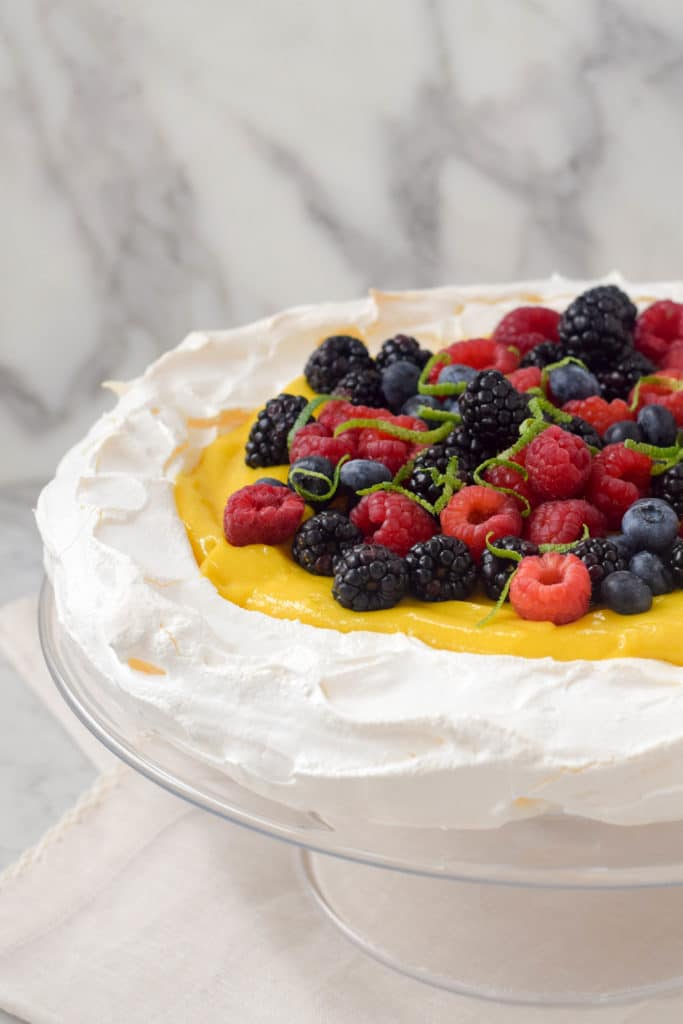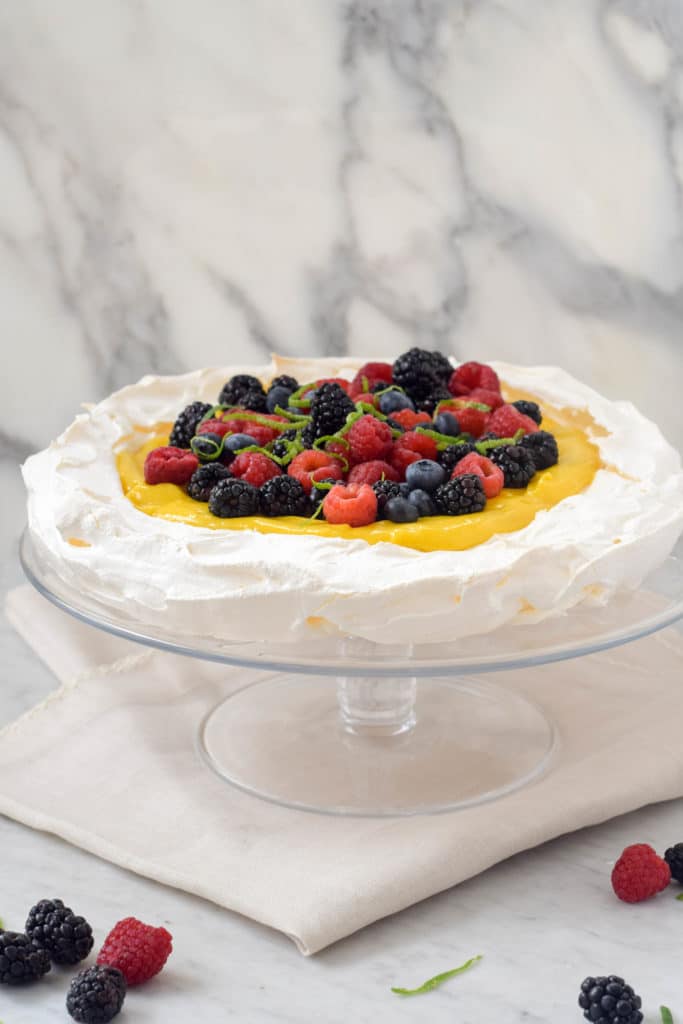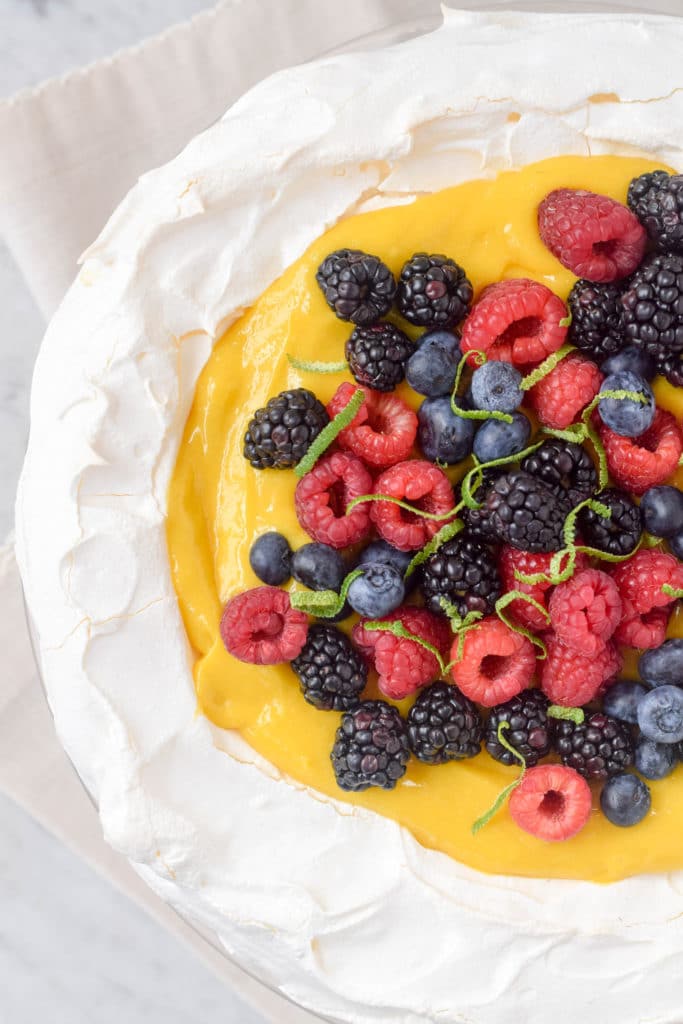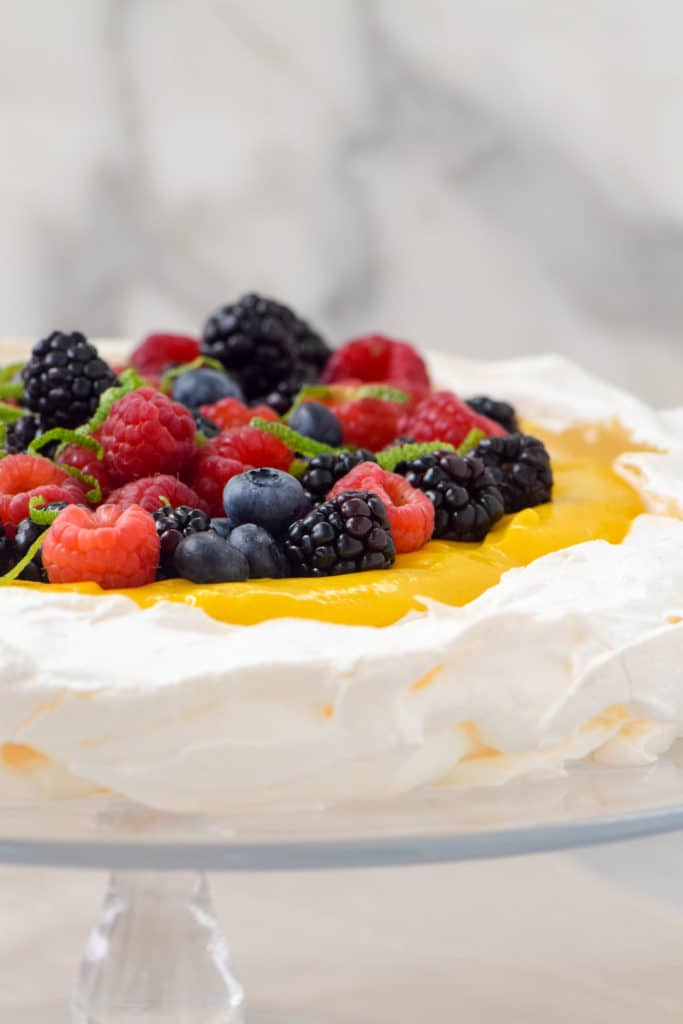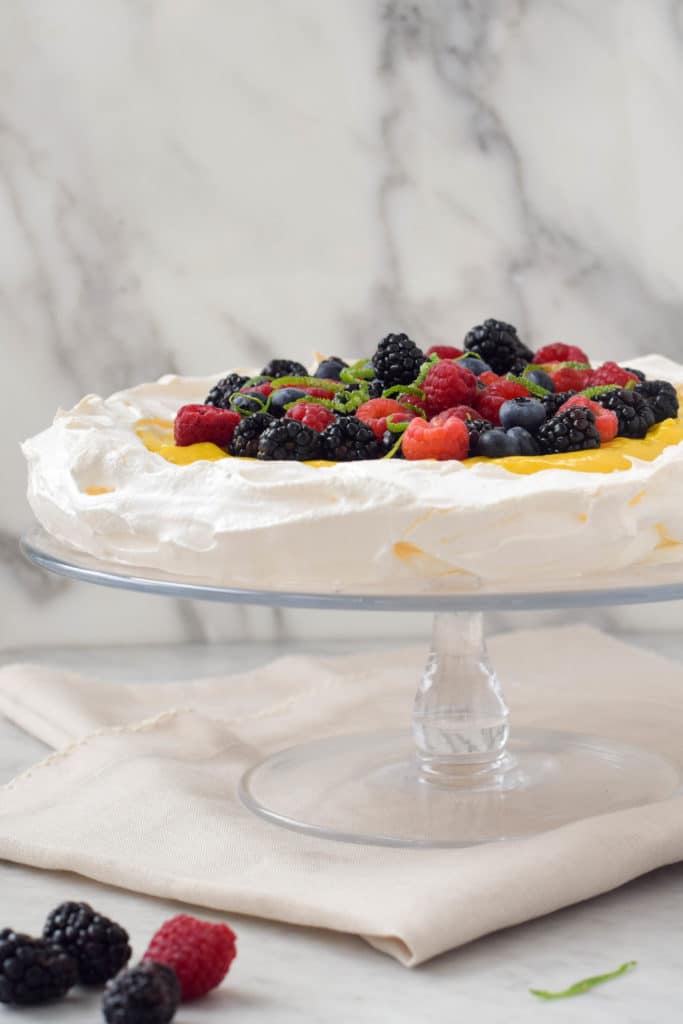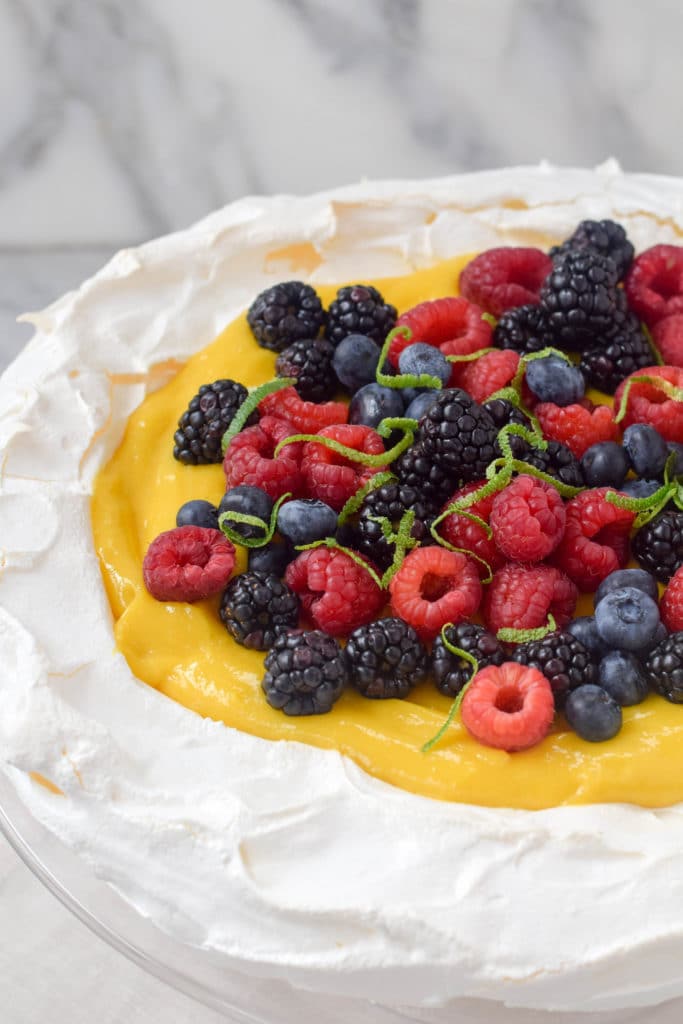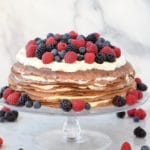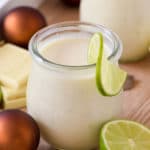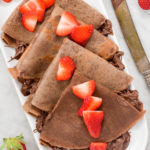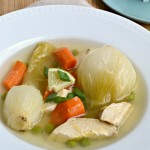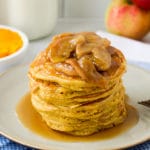A dreamy kosher-for-Passover dessert: a light, airy pavlova filled with tart mango curd and fresh berries! Easy to make dairy-free.
Put away that matzo meal! Once again, I am bringing you a kosher-for-Passover dessert that doesn’t suffer from a lack of wheat because it never had wheat to begin with. Today, we are learning how to make a crunchy-on-the-outside, sticky-on-the-inside pavlova that is filled with luscious, silky mango curd and topped with fresh berries. This recipe is completely kosher for Passover and can be easily adapted to be dairy-free — if that is important to you.
What is a pavlova, for the uninitiated? Hailing from the Antipodes and named after a legendary ballerina, a pavlova is a oversized meringue that is topped with something soft — typically whipped cream or, as here, fruit curd — and fresh fruit. If you want to sound really in-the-know, refer to it as a “pav.” That’s what Australians do. Like, “want some pav, mate?” Now you try.
In a pavlova, the meringue is supposed to be dry and crisp on the outside but marshmallowy and gooey in the center. As a result, what looks beautiful and elegant upon presentation quickly turns into a bit of a mess on the plate. But what a delicious mess it is! The meringue is achingly sweet and the fruit bracingly tart. Each bite has the shatter of the meringue’s exterior, the teeth-stopping chewiness of its marshmallow insides and the velvety softness of the fruit curd.
And because meringue is merely egg whites and sugar, it is a perfect dessert for Passover or any other occasion when you want to avoid wheat or other grains.
I was inspired to make a mango curd to fill the pavlova by the confluence of two recent events. First, I saw the petite Ataulfo mangos — sometimes called champagne mangos — on sale for less than a dollar each at my local grocery store. I love these sweet, buttery mangos and can’t resist buying them in bulk when they go on sale. If that sale happens to coincide with Passover, then mango curd is the new Passover staple.
Second, I picked up a copy of the stunning new book The Artful Baker by Turkish baking blogger Cenk Sönmezsoy. In it, I found a recipe for individual pavlovas filled with mango curd and topped with red currants. With mangos on sale and Passover appraoching, I decided to create my own version of a pavlova filled with mango curd. But good luck finding red currants in North America in March.
There are two small modifications to the traditional pavlova recipe that are necessary to make this dessert kosher for Passover. First, most pavlova recipes call for cornstarch to help stabilize the meringue, but cornstarch is not kosher for Passover. You can simply omit the cornstarch — which some people prefer because cornstarch can add a chalky texture — or do as I do here and substitute tapioca or potato starch.
(If it is not Passover or you aren’t even Jewish and you have cornstarch but not potato or tapioca starch in your pantry, feel free to just use the cornstarch. Don’t overthink it.)
Second, you will need a bit of vinegar to help crisp up the outside of the meringue while keeping the insides gooey. Determining what kind of vinegar is kosher for Passover is the kind of thing that makes me contemplate converting to a religion where debate and heated “discussions” are not quite so prized. Suffice to say, if this is important to you, please use a vinegar that is usually considered kosher for Passover such as apple cider vinegar.
Lastly, a note about dairy. I wanted to fill my pavlova with fruit curd and not whipped cream because I wanted to make this recipe dairy-free for those readers who keep kosher. I do, however, use a small amount of butter in the mango curd. If you wish to make this recipe dairy-free, you can simply skip the butter. The mango puree at the base of this curd is quite thick and rich and you do not need the butter to achieve a lovely, thick curd.
An absolutely show-stopping dessert that is both gluten-free and dairy-free? That will come in handy whether you are Jewish and keeping Passover or not. This recipe will never be vegan though because, as my poor, allergic daughter said, it has hella egg.
Chag sameach Pesach everyone!
Ingredients
- 2 Ataulfo or champagne mangos or one larger mango
- 4 egg yolks (reserve the whites)
- 1/2 cup sugar
- Juice and zest of one lime
- 2 TB butter, softened (optional)
- 4 egg whites (reserve the yolks) at room temperature
- 1 cup sugar (preferably caster or superfine sugar)
- 1 tsp cornstarch, potato starch or tapioca starch (optional)
- 1 tsp vanilla extract
- 1 tsp distilled white, white wine or apple cider vinegar
- Fresh fruit
Instructions
- To make the mango curd, puree the flesh of the mango or mangos in a food processor or high-speed blender.
- In a small saucepan, whisk together the egg yolks and sugar until lightened in color.
- Add the zest and juice of the lime and 1/2 cup of the mango puree, reserving any additional puree for another use.
- Gently heat the mixture over medium-low or low heat, stirring constantly, until the mixture thickens. Do not allow to boil
- Place a fine-mesh strainer over a glass bowl and ladle the curd into the strainer. Gently push the curd through the strainer with a spatula to strain out the zest and any bits of cooked egg.
- If using, add the butter to the strained curd and stir until melted.
- Cover and chill the curd. (May be done up to three days in advance.)
- To make the meringue, preheat the oven to 225 and line a baking sheet with parchment paper. Trace a 9-inch circle on the parchment paper.
- Place the egg whites in a bowl of a stand mixer fitted with the whisk attachment. (For best results, make sure the bowl is scrupulously clean.)
- Beat on medium speed until soft peaks form.
- Mix the sugar and any starch, if using, in a small bowl and gradually add the mixture, one tablespoon at a time to the egg whites, whie whisking and gradually increasing the speed to high.
- Beat egg whites until they form stiff peaks. Pour in vanilla extract and vinegar and beat for an additional 30 seconds to blend.
- Place meringue mixture on the parchment and spread into a circle, creating a shallow well in the middle and a low wall on the outside.
- Bake for 60 minutes until the outside is dry and crisp. (Try not to let the meringue take on color. If needed, turn heat down to 200.)
- If desired, you can turn off the heat and allow meringue to dry out in the oven or, for a chewier pav, remove it to a cooling rack and cool completely for several hours. (May be done up to one day ahead. If storing overnight, wrap meringue in plastic.)
- To assemble, spread mango curd in center of meringue. Top with fresh fruit and strips of lime zest.
- Serve immediately.
